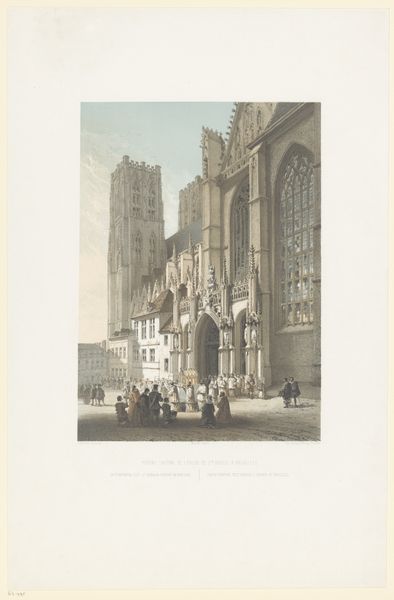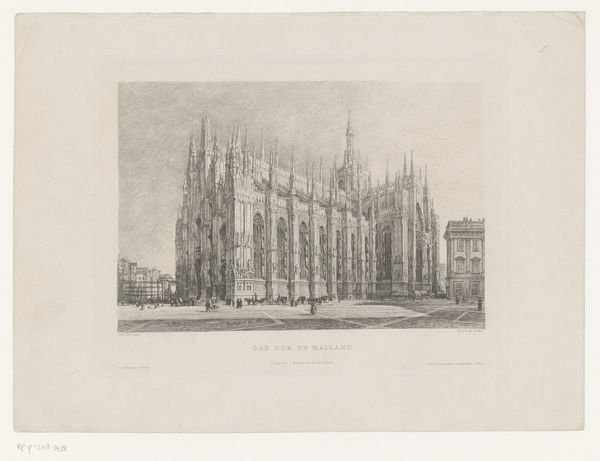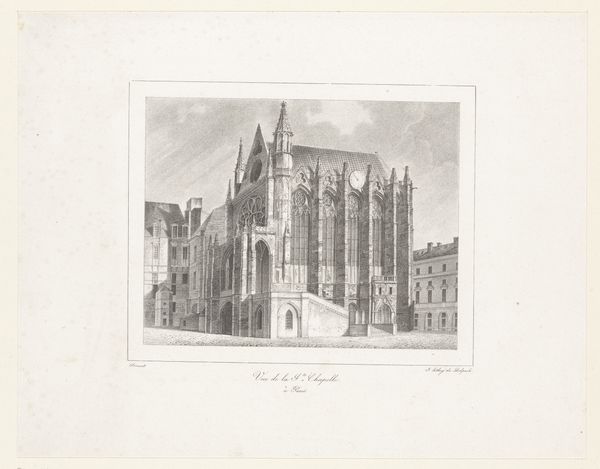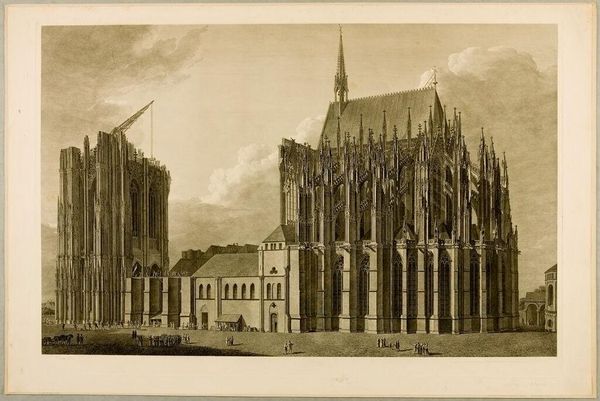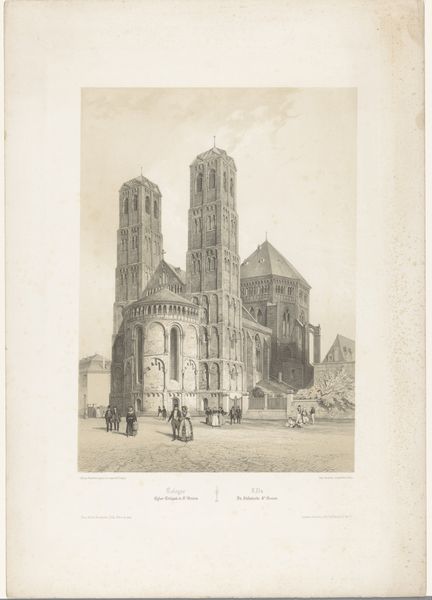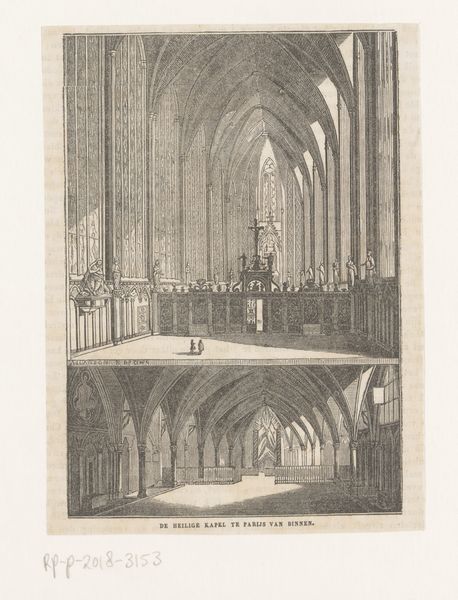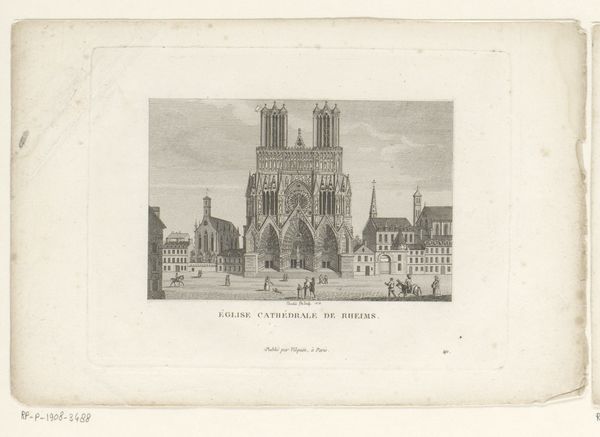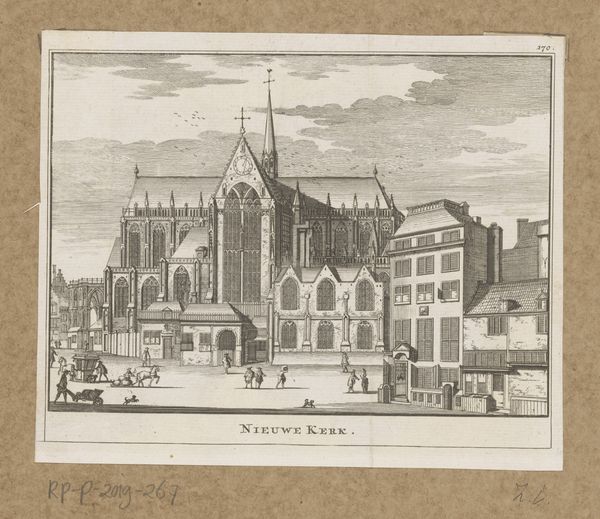
drawing, print, etching, paper, ink, engraving, architecture
#
drawing
# print
#
etching
#
paper
#
historical photography
#
ink
#
romanticism
#
cityscape
#
engraving
#
architecture
Dimensions: height 250 mm, width 341 mm
Copyright: Rijks Museum: Open Domain
Curator: Here we have Adrien Canelle's etching and engraving on paper, titled "Kathedraal van Sint-Michiel en Sint-Goedele," dating from 1829 to 1869. It’s a remarkable rendering of the cathedral in Brussels. Editor: Wow, what a commanding presence, even in print! The cathedral looms large, almost vibrating with detail, and the subtle variations in tone suggest a real mastery of light. Curator: Indeed. Canelle captures not just the physical structure but the way Gothic architecture was often deployed—to inspire, even overwhelm. The Cathedral's grandeur speaks volumes about the power and piety the church sought to project. The city is so very interesting, during the 1800s it was very much interested in art as national power. Editor: I’m really drawn to the figures at the base of the cathedral. They’re so small in comparison that it gives the building an even more intense monumental feel. It's almost a study in perspective, but beyond just architectural accuracy, don't you think it feels rather...romanticized? Curator: Precisely! Romanticism wasn't just about idyllic landscapes; it was about experiencing profound emotions, including awe. Representing grand architecture tapped into that directly. Etchings and engravings were important for broad circulation as well and national building efforts were key to identity making. Editor: So in its own way, the building *is* a kind of art installation then. Even if there's a separation from what's naturally grown up around the building. It really makes me want to see this building myself, to compare it with what the people felt as the installation was completed and their immediate feelings on viewing such scale, the history they built, and those standing figures and think about my place inside the narrative, now, so much later. Curator: Ultimately, I think this artwork invites us to consider the role of architecture and public works in shaping a society’s image of itself and in some ways the very identity. Editor: For me, it is seeing past the stone to the intentions of those who commissioned it—as well as experiencing the thrill of scale through Canelle’s sensitive hand. What a great reminder of how public works impact the public and our understanding of them today.
Comments
No comments
Be the first to comment and join the conversation on the ultimate creative platform.
